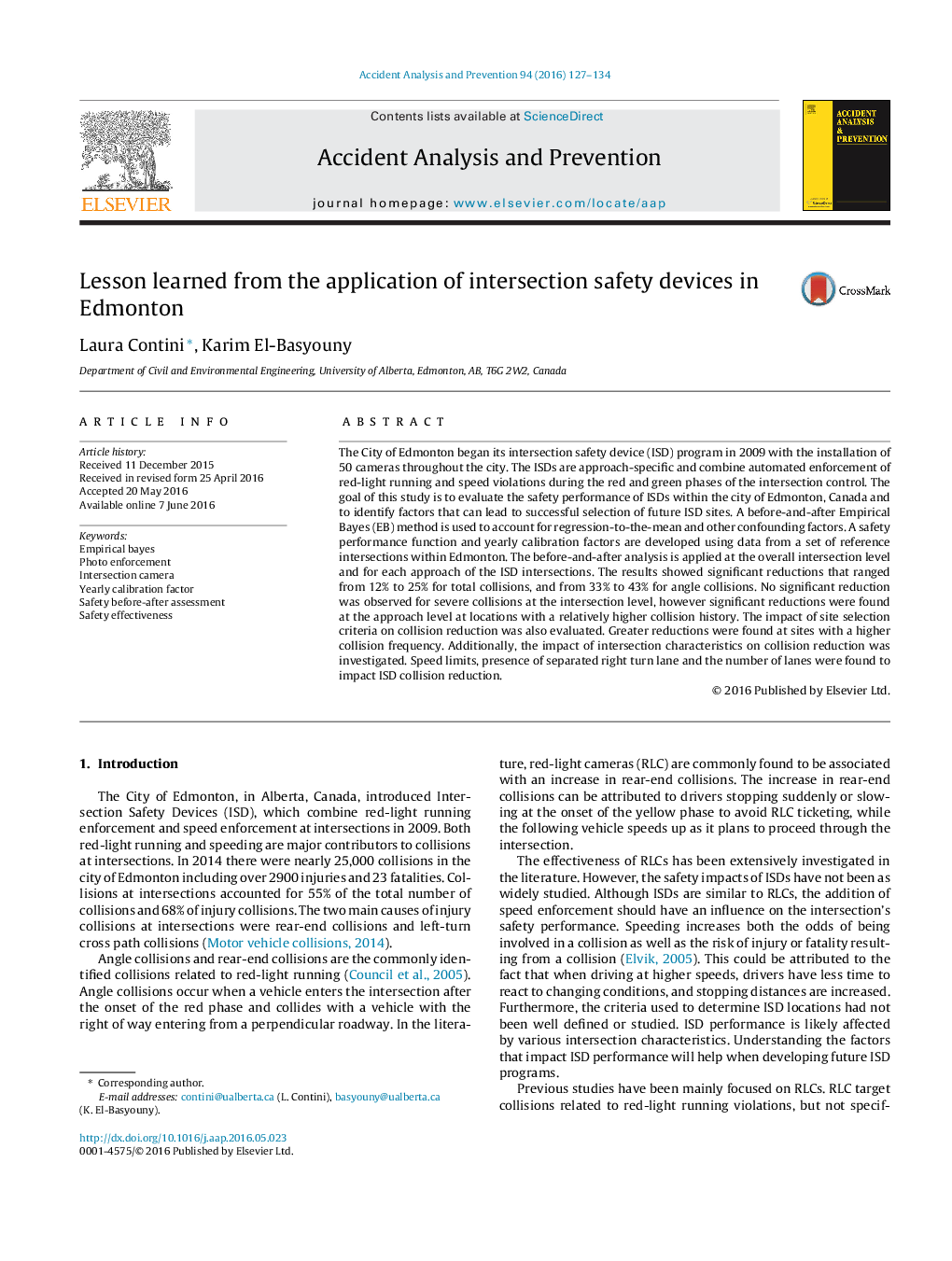| کد مقاله | کد نشریه | سال انتشار | مقاله انگلیسی | نسخه تمام متن |
|---|---|---|---|---|
| 572014 | 1452903 | 2016 | 8 صفحه PDF | دانلود رایگان |
• Empirical Bayes (EB) before-and-after method was used to evaluate the safety performance of Intersection safety devices (ISDs) at an intersection level and approach level.
• Significant reductions were found for total collisions, rear-end collisions and angle collisions.
• Site selection criteria were evaluated and speed limits, presence of separated right turn lanes and the number of lanes were found to impact ISD collision reductions.
The City of Edmonton began its intersection safety device (ISD) program in 2009 with the installation of 50 cameras throughout the city. The ISDs are approach-specific and combine automated enforcement of red-light running and speed violations during the red and green phases of the intersection control. The goal of this study is to evaluate the safety performance of ISDs within the city of Edmonton, Canada and to identify factors that can lead to successful selection of future ISD sites. A before-and-after Empirical Bayes (EB) method is used to account for regression-to-the-mean and other confounding factors. A safety performance function and yearly calibration factors are developed using data from a set of reference intersections within Edmonton. The before-and-after analysis is applied at the overall intersection level and for each approach of the ISD intersections. The results showed significant reductions that ranged from 12% to 25% for total collisions, and from 33% to 43% for angle collisions. No significant reduction was observed for severe collisions at the intersection level, however significant reductions were found at the approach level at locations with a relatively higher collision history. The impact of site selection criteria on collision reduction was also evaluated. Greater reductions were found at sites with a higher collision frequency. Additionally, the impact of intersection characteristics on collision reduction was investigated. Speed limits, presence of separated right turn lane and the number of lanes were found to impact ISD collision reduction.
Journal: Accident Analysis & Prevention - Volume 94, September 2016, Pages 127–134
